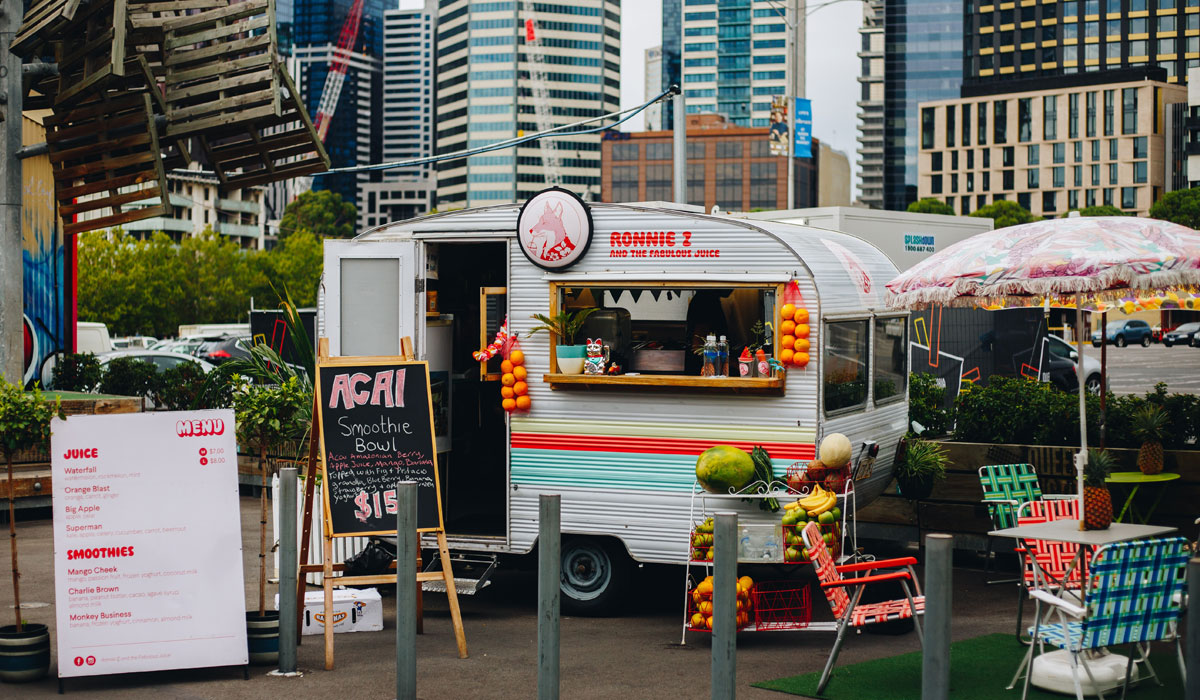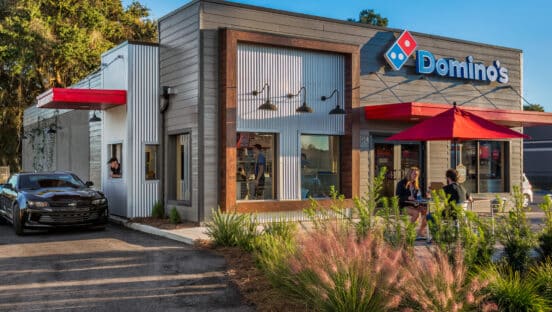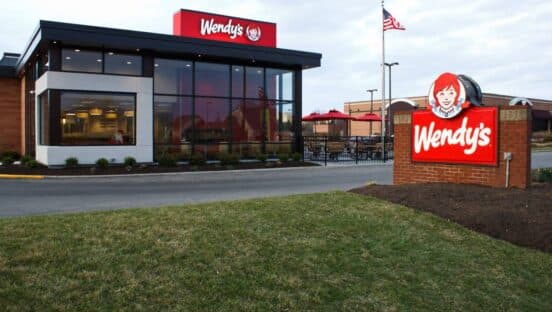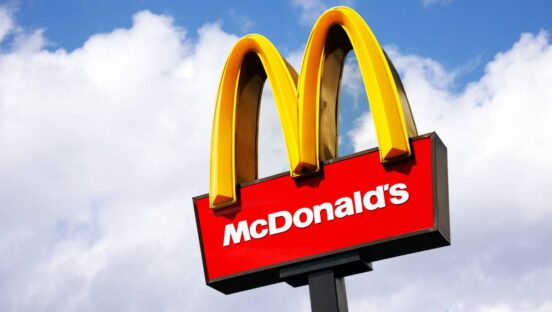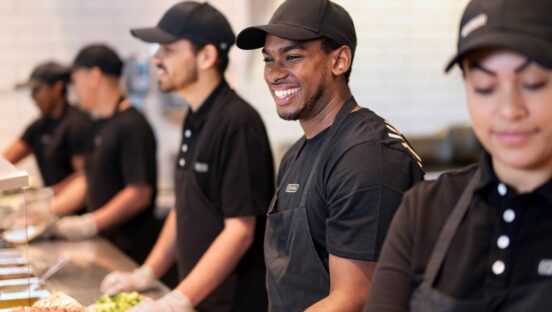In 2018, an innovative startup named &pizza started using food trucks and heat-mapping technology to launch into Miami. The experimental growth model allowed &pizza to generate revenue from delivery while testing profitable locations, an approach that initially generated media attention. A Forbes feature noted, “The approach allows &pizza to get to markets faster and apply data to inform its real estate strategy.”
In September of 2019, &pizza again drew headlines when it launched a fleet of food trucks closer to its home market of Washington DC. “By leveraging this truck fleet, &pizza expects to open new locations for a fraction of the cost of its traditional units, as well as test new products before adding them to its brick-and-mortar experience,” described another article.
Unfortunately, you probably won’t find many other articles exploring mobility-focused off-premises strategies. Instead most of the industry is focused on third-party delivery, virtual brands, fixed location ghost kitchens, automation, and utilizing existing locations. There’s no doubt that off-premises is more important than ever. A 2019 survey by the National Restaurant Association found that 60 percent of foodservice occasions were off-premises. Yet there’s also no doubt that many of the current strategies and tactics are unproven. The risks have been compounded by the pandemic, which has made off-premises the only way to survive in many cases.
A possible solution lies in the story of &pizza: mobility. The uncertainty that exists today exposes the risk that real estate carries. It doesn’t matter how efficient your menu is if you’re stuck in the corporate park where employees aren’t coming back. And it doesn’t matter how great your virtual brands are if you’re limited by delivery radius.
The answer to future growth (and current survival) lies in being location agnostic and mitigating the risks of both real estate and current off-premises strategies.
The Power of Mobility & Mobile Food Facilities
The foundation of a mobile quick-service restaurant strategy is the right equipment. The word “food truck” does not fully encompass the wide range of kitchen infrastructure that is available in a mobility strategy. Along with a traditional food truck, a restaurant can invest in other mobile food facilities such as food trailers, carts, pop-up, kiosks, or other custom equipment that enable food to be produced and served outside a brick-and-mortar location. There are endless combinations of this equipment setup depending upon menu needs and desire for guest experience.
The No. 1 advantage of mobile food facilities is flexibility. They can change location, cost less than brick and mortar restaurants, and present several revenue opportunities. The mobile food facility model, however, is not a replacement for traditional brick and mortars. Instead it enhances your reach and allows for experimentation that de-risks your business and unlocks future growth. Here’s how:

Location Flexibility
The primary advantage of mobile food facilities over other types of kitchen infrastructure is their ability to move. This allows both easy flexibility in changing locations as well as the ability to easily transport food from central prep kitchens. According to QSR’s 2020 Future of Fast Casual Report (released in April), 84 percent of respondents said location is extremely or somewhat important when it comes to fast casual dining, putting it at the top of the list. Months later, it now seems even more crucial. Unfortunately, what was a great location at the beginning of 2020 might not be great anymore. On top of this, it’s extremely uncertain how real estate risk will change over the next several years. The solution for this uncertainty is flexibility.
Since March, most restaurants have focused on off-premises channels such as third party delivery, order ahead and pickup. And rightly so. Within the span of a couple of weeks, most of America was doing everything from home. So far, however, delivery radius is still dictated by location. Even companies that have focused on virtual brands, another hot topic from the last couple of years, are tied to physical locations, whether their kitchens are in-house or at ghost kitchens. This works well if your physical location happens to be immediately next to your target customers; but less so if your kitchen space is in a highly industrial area requiring at least a 15 min drive to where your customers live.
The benefits of mobility cannot be overstated. It creates flexibility that unlocks the potential of almost every off-premises channel. When you can go anywhere, you can deliver anywhere. As the pandemic subsides and people begin gathering again, you can show up at any event and unlock revenue streams previously off limits. And when you can show up in your community, such as a local school fundraiser, your brand builds roots that will help it weather unforseen storms.
Mobility also allows you to strengthen your real estate position. A strong location for a mobile food facility is a good bet for a brick and mortar restaurant. Taking out even a small percentage of risk may set the future winners in the quick-service restaurant industry apart from those that fail. This concept is nothing new to the food truck industry, where successful concepts graduate into successful brick and mortar locations. In today’s landscape, however, mobility is the answer to a brick and mortar expansion strategy, not the other way around.
Cost Flexibility
Beginning with startup costs, a mobile food facility can be 5 to 10 times less expensive to get up and running than traditional brick and mortar locations. In terms of equipment, a custom built food truck will generally cost more than a trailer or mobile kiosk. Subsequent equipment costs can also be less expensive, since the kitchen layout, design, and equipment are optimized and don’t have to be re-imagined.
There is also flexibility with upfront costs. You can choose to buy or lease, repurpose the equipment for other concepts, or sell it altogether on a food truck marketplace.
Operating costs are also less expensive, since it takes less staff to operate a food truck. There are, however, other costs, such as vehicle maintenance, commissary fees, and fuel costs, that need to be carefully planned for. Without proper experience, hidden costs could cut into profits.
Flexibility for Revenue Generation
The third broad benefit of mobile food facilities is flexible revenue streams. Food trucks allow you to conduct multiple types of business and are equipped for delivery, takeout, walk-up traffic, and catering.
When it comes to delivery, a mobile food facility can expand your radius to any location. The efficiency of mobility allows for higher quality food, since you’re closer to customers, and gives you the ability to optimize pricing based on neighborhood and demographics. It also lets you optimize your virtual brands based on location, unlocking once hidden profits. Essentially, it’s a ghost kitchen that you can place wherever you want, while also having the benefit of direct-vending and brand building.
Events and catering are also untapped sources of revenue for many traditional restaurants. Vending opportunities (i.e., large events, corporate events, and community events) can generate sales and grow your digital presence and brand. Corporate and private catering opportunities can do the same. On top of this, the ability to move from a profitable lunch location (near offices) to a profitable dinner location (near residences) can have tremendous benefits for your bottom line. And once again, pricing is a variable that can change based on event type.
Models for Success
Once you understand the power of mobility, it’s important to understand how it can be added into your current business model. While every business may have a different strategy for expansion and growth, below are two models that have proven to be effective.
The Hub & Spoke Model
As we’ve mentioned earlier, mobile food facilities are not a replacement for brick and mortar locations. If you have existing physical locations, food trucks enable hub and spoke logistics, a sustainable long-term model for expansion in the off-premises world.

In the hub-and-spoke model, your brick and mortar location acts as your hub. This is where ingredients are delivered, food and supplies are stored, and where any necessary prep work takes place. Your existing brick and mortar location can be the central prep kitchen to service an entire city. Your mobile equipment are your spokes, which allow you to telescope to all trade areas and meet consumers where they live, work, and gather. Load up each spoke with pre-prepared food, go out to target locations, and prepare meals on site.
The Real Estate Expansion Model
If you’re looking to expand your business into new markets, mobile food facilities can be used to get data quickly about which specific neighborhoods are viable. Paired with data from delivery, you’ll quickly understand where the opportunities lie. As &pizza’s founder describes, the food truck model “allows us to have the flexibility to test out submarkets within markets to understand how we perform and use that as a real estate strategy.” In fact, while building a new brick and mortar location, some brands have placed food trucks onsite in order to generate insights and start building a customer base.
The Challenges of Mobile Food Facilities
The current food truck movement (2008-2020) has been a unique niche inside the food service industry. Traditionally, restaurants have used food trucks mostly to expand their catering capabilities, but have rarely taken advantage of all the opportunities they present. Therefore, mobility is a strategy that few companies have been able to figure out.
After 11 years in the food truck industry, we want to make it clear that there are subtle but powerful differences between running a brick and mortar location and a food truck. Some of the common pitfalls are described below. To overcome them you will need expertise in how to efficiently start-up and operate your equipment.
Building the Right Equipment
Understanding the space constraints of your mobile kitchen is crucial to long-term success. The layout of your stoves, fryers, ovens, refrigerators, and storage will affect your workflow and staff. A well designed kitchen that maximizes your menu choices and output is key.
Licenses and Permits
Local permitting laws can be a barrier to entry in some cities and counties. Upfront research and time need to be spent to understand where and how a food truck can serve within a specific city or county. Unfortunately, there is no one-size-fits-all approach to service all markets and careful local consideration needs to be given in all scenarios.
Parking and Locations
Location intelligence is crucial. To unlock the revenue potential of delivery, order ahead, and walk up service, you’ll need reliable spots to park. This is especially important if your strategy is to expand into new territories.
A Full Understanding of the Revenue Streams
As we’ve mentioned, mobility unlocks hidden growth opportunities. To start, you’ll need a clear plan about how to generate revenue with your mobile food facility strategy. If you get the model right, the economy of scope will quickly make you profitable.
Strong Branding and Digital Marketing
While this point may be unnecessary given that most quick-service brands have a strong digital presence, it is worth noting that recent success stories involved creative digital marketing strategies.
In April, Wayfare Tavern, a high-end restaurant based in San Francisco, launched their food truck two weeks after their location closed due to COVID-19. To find the best locations, they asked their social media followers where to bring the truck. The one-on-one communication turned into a very profitable venture, although a short lived one. The city shut down the truck because of a permitting technicality without giving Wayfare a clear avenue to quickly relaunch (see Licenses and Permitting above).
Moving Forward
A recent QSR article titled “How COVID-19 Has Changed the Off-Premises Game Forever” notes, “business as usual is long gone for most brands.” We agree. There are no clear solutions in a time of uncertainty, only risks that must be navigated.
We believe that the solution to uncertainty is flexibility, and the best approach to location flexibility is mobility. Flexibility, creativity, and mobility are the tools necessary to drive future growth. Rather than thinking of food trucks as one-off marketing vehicles or a means to a brick and mortar, think about them as essential components of quick-service expansion in this new world.
Nothing is guaranteed these days, but we know that change is at our doorstep and those who adjust, adapt and adopt will have the competitive advantage. What we’ve learned in the last decade is that food trucks are the ideal vehicle for navigating these roads of change.
Ross Resnick is the founder and CEO of Roaming Hunger. Since 2009 the company has added over 18,000 mobile food providers to its network, and has provided mobile food solutions to Fortune 1000 companies and community events alike. Today the company is focusing on leading the next phase of the mobile food industry and helping the restaurant industry develop successful off-premises strategies through its expertise, equipment capabilities, proprietary data, and locations and placements platform.

